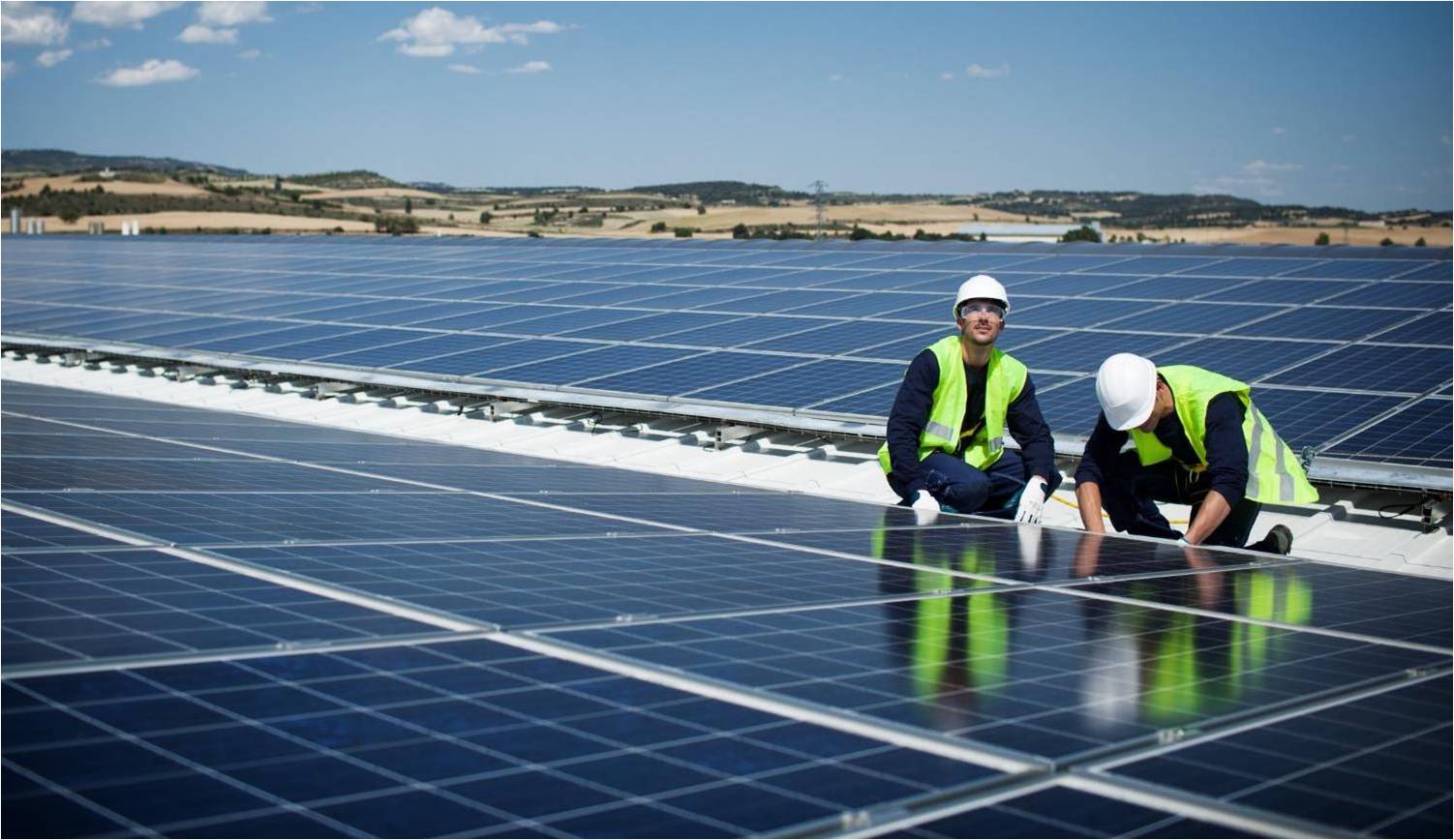
New Study by REC: Closing the COP21 Gap by Going Solar
In a major new study, REC, a leading global provider of solar energy solutions, highlights the potential of solar energy to close the CO2 emissions gap. REC’s calculations clearly show that, based on the COP21 targets set during the UN Climate Change Conference in Paris last December, solar can make a significant contribution. However, to be on track by 2025 to close the emissions gap and avoid further accelerating climate change impacts, the potential solar capacity ramp-up is far larger than industry analysts today expect, resulting in up to 4.8 terawatts above current forecast of cumulated new solar capacity by 2025. Executive summaries of the results can be downloaded from the REC website (www.recgroup.com) here. The complete study will be published for the Intersolar Europe, June 22-24, 2016, where REC will be present at booth A2.380.
The results of the REC study – one of the first in the world to calculate the specific impact of COP21 for the solar industry – come at an opportune time for global efforts to drive down emissions. Governments are meeting this week for the UN Climate Change Conference in Bonn, Germany, to move ahead with the landmark Paris Climate Change Agreement, and prepare for the 22nd Conference of the Parties (COP22) to be held later this year. At COP22, governments are targeting an accord on the rule book of the Paris Agreement, hammering out concrete steps for taking the agreement into force. To meet the targets agreed in Paris, there will have to be quick and substantial reductions in greenhouse gas emissions in the decades ahead.
One key area investigated in the REC study is the shortfall in many countries around the world between renewable energy commitments and emission reduction targets. The German power sector, for example, will have to reduce emissions by 1.152 Gt by 2025 (equivalent to taking 50 million cars off the road) to be on track for the COP21 target of keeping the global temperature rise below 1.5ºC. The REC task force has calculated that Germany will have to almost fully eliminate coal – which still accounts for 45% of the country’s electricity generation mix – to close its cumulative emissions gap by 2025. To replace coal and concurrently deliver on the commitment to phase out nuclear, Germany will need to add an average 8.31 GW of solar capacity every year – ramping up solar by 4.6 times the current forecast.
Coal is in fact an issue in all of the countries that REC investigated. The Netherlands, for instance, whose share in total global CO2 emissions is just 0.4%, is the fifth-worst environmental performer in Europe on the 2015 Environmental Performance Index, with increased use of coal the reason for the poor ranking. The REC study calculates that a sharp ramp-up of solar and wind energy (with cumulative additional solar capacity of 14 GW, less than double the current forecast) will make coal fully dispensable as of 2023. In the USA, cumulative solar PV installations of approximately 790 GW will be required to keep the country on track to meet its share of closing the emissions gap by 2025 in the power industry. That is four times the current forecast installations through 2025. For Japan, the world’s fifth largest emissions emitter, the REC calculations demonstrate that the country’s COP21 pledge to reduce emissions by 26% by 2030 compared to 2013 levels falls short of what would be required considering Japan’s 3% share in global emissions. Using solar to close part of the gap, Japan would need cumulative additional solar capacity of 250 GW by 2025, more than three times the current forecast.
Steve O’Neil, CEO at REC, summarizes the outlook: “The results of our calculations are eye-opening. Comparing emissions forecasts under current policies and to limit temperature increase to 1.5ºC, the world needs to reduce a significant cumulative amount of 144 Gt of CO2 emissions by 2025. Since one third of energy-related CO2 emissions worldwide are from the power sector, REC believes that solar can make a significant contribution – specifically, 25% – to reducing emissions, which in turn will contribute to limiting the temperature increase. And the earlier the world begins to accelerate the pace of installations, the less capacity will be required at the end.”
As REC has calculated, this will require a sharp ramp-up of solar capacity, reaching installations of 1.7 terawatts in 2025 alone, nine times the forecast based on the current trend. REC will continue to leverage this incredible momentum for solar with expanded capacities, new business models and increased activities in new emerging markets.
For further information please contact:
Agnieszka Schulze
Head of Global PR, REC
Leopoldstr. 175, 80804 Munich, Germany
Phone +49 89 54 04 67 225
Email agnieszka.schulze@recgroup.com
Follow REC on Twitter
About REC:
Celebrating its 20th anniversary in 2016, REC is a leading European brand of solar panels. Through integrated manufacturing from polysilicon to wafers, cells, panels and turnkey solar solutions, REC strives to help meet the world’s growing energy needs. Founded in 1996, REC is a Bluestar Elkem company with headquarters in Norway and operational headquarters in Singapore. REC concluded 2015 with 2,000 employees worldwide, 1.3 GW solar panel production capacity, and annual revenues of USD 755 million.
Find out more about REC at www.recgroup.com